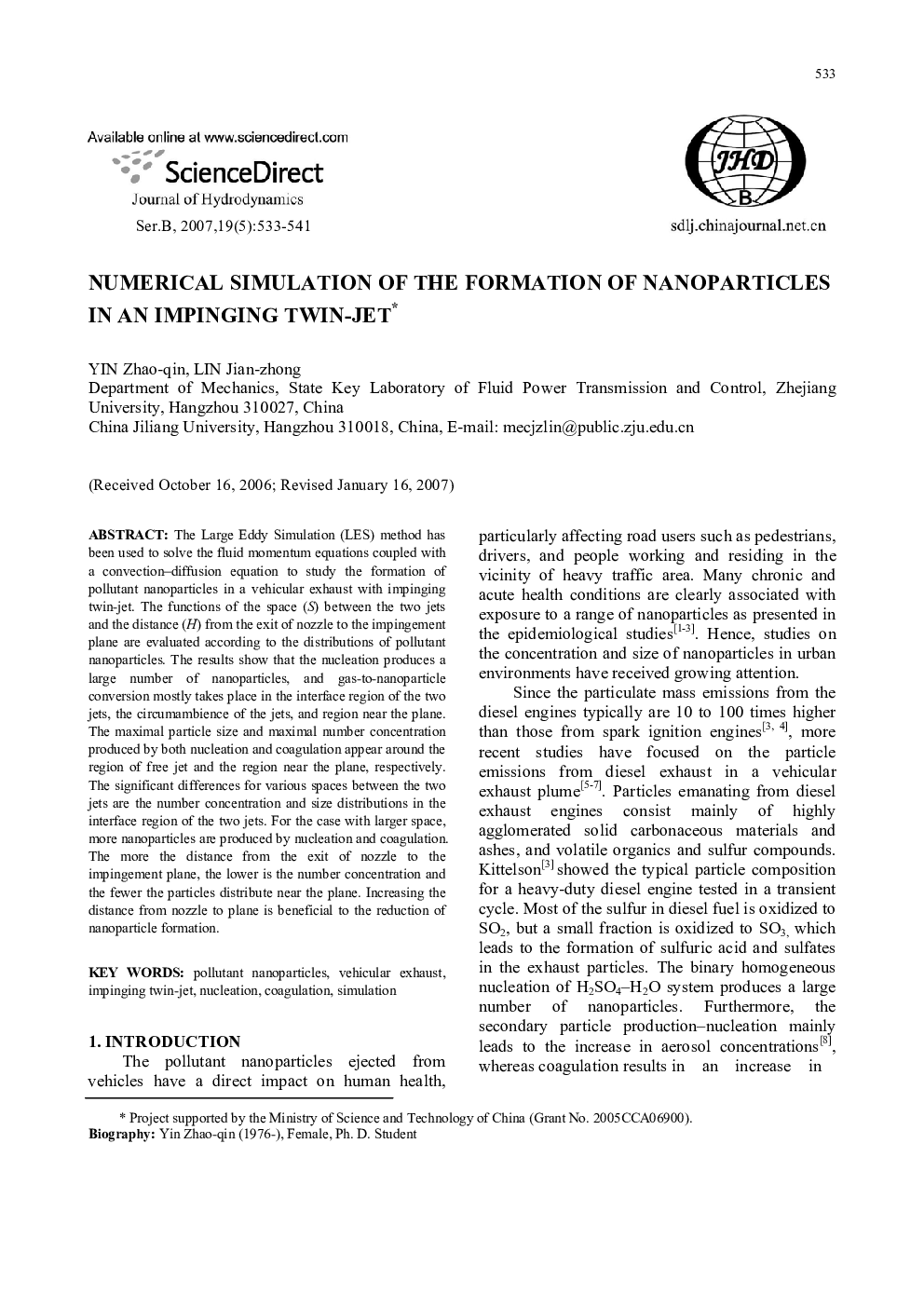| Article ID | Journal | Published Year | Pages | File Type |
|---|---|---|---|---|
| 1722626 | Journal of Hydrodynamics, Ser. B | 2007 | 9 Pages |
The Large Eddy Simulation (LES) method has been used to solve the fluid momentum equations coupled with a convection–diffusion equation to study the formation of pollutant nanoparticles in a vehicular exhaust with impinging twin-jet. The functions of the space (S) between the two jets and the distance (H) from the exit of nozzle to the impingement plane are evaluated according to the distributions of pollutant nanoparticles. The results show that the nucleation produces a large number of nanoparticles, and gas-to-nanoparticle conversion mostly takes place in the interface region of the two jets, the circumambience of the jets, and region near the plane. The maximal particle size and maximal number concentration produced by both nucleation and coagulation appear around the region of free jet and the region near the plane, respectively. The significant differences for various spaces between the two jets are the number concentration and size distributions in the interface region of the two jets. For the case with larger space, more nanoparticles are produced by nucleation and coagulation. The more the distance from the exit of nozzle to the impingement plane, the lower is the number concentration and the fewer the particles distribute near the plane. Increasing the distance from nozzle to plane is beneficial to the reduction of nanoparticle formation.
